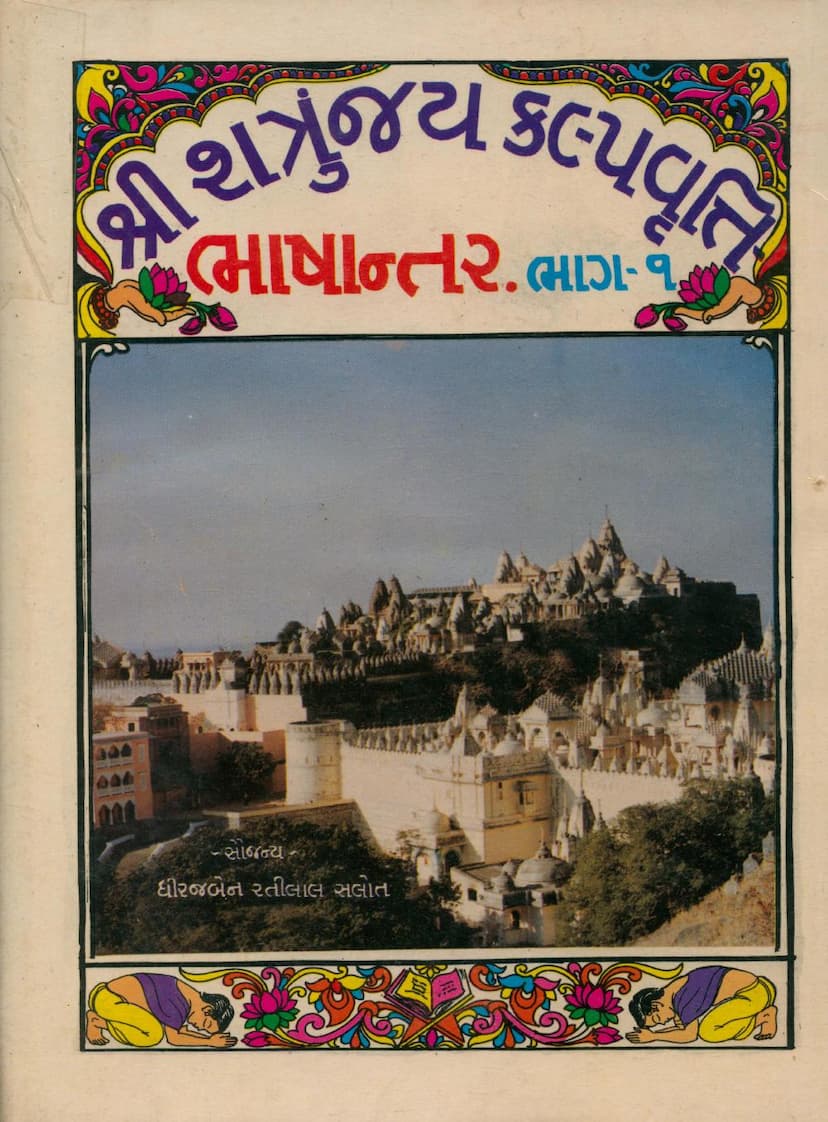Shatrunjay Kalpa Vrutti Part 01
Added to library: September 2, 2025

Summary
The provided Jain text, "Shatrunjay Kalpa Vrutti Part 01," authored by Shubhshil Gani, Mahabhadrasagar, and Kapurchand R Varaiya, published by Shraman Sthaviralay Aradhana Trust, is a foundational work within Jain literature that focuses on the glorification and significance of the Shatrunjay pilgrimage site. The text is a commentary (Vrutti) on the Shatrunjay Kalpa, likely a precursor text detailing the rituals, legends, and merits associated with this sacred mountain.
This first part of the commentary, spanning 44 pages, serves as an introduction and foundational exposition of the Shatrunjay Kalpa. It begins with a deep sense of reverence, offering salutations to the revered gurus and spiritual lineage. The initial pages are dedicated to expressing gratitude and acknowledging the contributions of various individuals and organizations who made the publication possible, including the publisher, translators, editors, and donors. This highlights the collaborative nature of preserving and disseminating religious texts.
A significant portion of the text is the "Editorial Statement" which narrates the "birth story" of this book. It recounts how the inspiration for this work arose from a need identified by Punya Padmacharya Pramodchandra Vijayji Ganivar a decade prior. He observed that there was a lack of accessible, detailed literature on the significance of Shatrunjay pilgrimage for pilgrims and monks alike during their stay at the site. This led to the conceptualization of creating explanatory discourses on the 14,224 verses and 110 stories related to Shatrunjay.
The text then details the discovery and translation of the original Sanskrit text, "Shri Shatrunjay Kalpa Vritti," authored by Shubshil Gani Maharaj. Muni Shri Mahabhadrasagar Maharaj undertook the monumental task of translating this ancient and previously unpublished work into Gujarati. This translation process was lengthy and involved dedicated effort, spanning 13 months and 10 days. The translation was aided by the co-editor, Shri Kapurchandbhai R. Varaiya, who played a crucial role in refining the text.
The editorial statement also elaborates on the publication model. The vision was to make the book available as a gift rather than for sale, aiming to distribute it to Jain centers, libraries, educational institutions, monks, and professors. This charitable approach underscores the commitment to spreading spiritual knowledge. The announcement of the project, seeking financial assistance, was made through handbills and a monthly journal, detailing donation tiers and the corresponding return gifts (sets of the book).
The text gratefully acknowledges the financial support received from various Sanghs and individuals, highlighting the initial contribution of Shri Dheerajben Ratilal Salot. It also mentions the decision to use offset printing for a high-quality presentation and thanks the printing press for their cooperation on a cost-plus basis.
Furthermore, the preface delves into the profound sanctity of Shatrunjay, describing it as unparalleled in the fourteen worlds. It mentions the reliance on ancient Jain scriptures like the 'Gyata Dharma Kathanga,' 'Antakrida Dashana,' and 'Saravali,' noting that the third scripture, 'Saravali Payano,' which was not readily available, has now been incorporated as a supplement in the second part of the translated work. The preface also touches upon the original Sanskrit text, "Shri Shatrunjay Kalpa," compiled by Shubshil Ganini Maharaj, a renowned Jain scholar and narrator, and its significance in Jain literature, particularly for its 21 names of Shatrunjay and 110 stories.
The book's structure is further explained, with Volume 1 covering various aspects such as the origin of Shatrunjay's names, the significance of its 21 names, four similes, the visits of 23 Tirthankaras, the stories of Lord Rama, Krishna, and the Pandavas, and 110 different narratives. The importance of the original Sanskrit text, compiled 599 years ago in Vikram Samvat 1518, is also emphasized.
The subsequent pages detail the contents of Volume 1, cataloging the stories and discourses related to Shatrunjay. These include narratives about the origin of the mountain's names, the significance of the four metaphorical comparisons, the visits of various Tirthankaras to Shatrunjay, and detailed accounts of the lives of important figures like Lord Rama, Lord Krishna, and the Pandavas in relation to the pilgrimage. The text highlights the miraculous events and spiritual insights associated with Shatrunjay, such as the story of King Chandrachud, the significance of the Rasakūpikā, and the importance of various rituals and practices.
The compilation aims to provide a comprehensive understanding of Shatrunjay's spiritual importance, its historical context within Jainism, and the immense merit derived from its pilgrimage. The text is a testament to the Jain tradition of venerating sacred sites and preserving their associated legends and teachings for the spiritual upliftment of the community. The detailed narrative structure, often presented in a story-telling format, makes the profound spiritual concepts accessible to the readers. The repeated emphasis on the sanctity and the liberating power of Shatrunjay pilgrimage underscores its central place in Jain devotion.